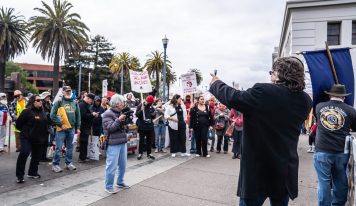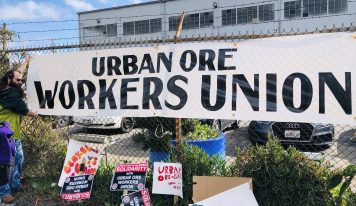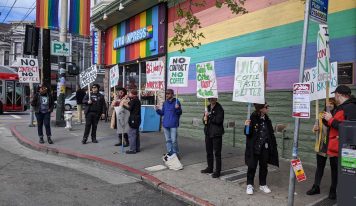Recently, the SFIJ had the opportunity to meet and catch up with San Francisco’s District 5 Supervisor Dean Preston. Dean, the first Democratic Socialist to be elected in San Francisco for over 40 years, narrowly won a special election for District following London Breed ascension to the Mayor’s office in 2019 and secured a full four-year term with a near mandate to implement his Democratic-Socialist agenda. Supervisor Preston hopes to build on successes from when he founded Tenants Together, a California tenant advocacy organization and helped write and pass legislation to benefit and protect working and vulnerable people. Our periodical is lucky to chat with a progressive champion who addresses critical issues of economic and racial equity within our City. Read below as Dean opens up about his recent win and how he plans to build on his platform.
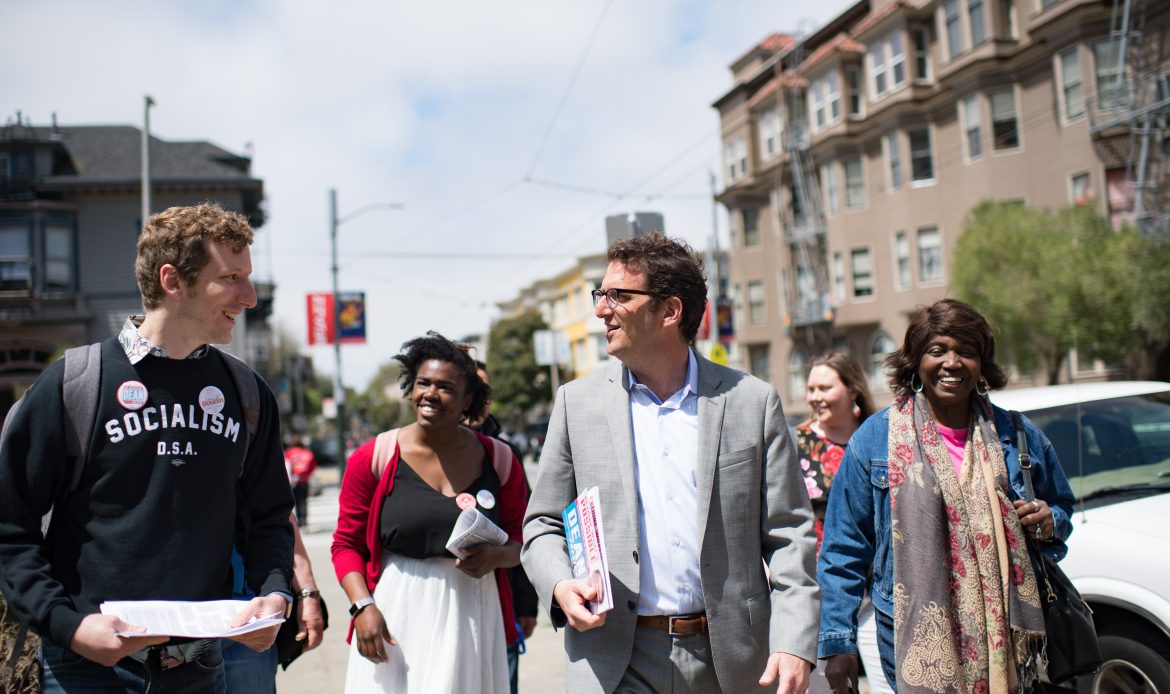
What are you reading right now?
I wish I had personal time right now. I’m reading the budget that the comptroller just gave me. The last couple of things I read that were actually books were with my kid. I have a 12-year-old who’s always feeding me books. Island of the Blue Dolphins or something like that. But if you want a book that’s not a children’s book then Parable of the Sower by Octavia Butler is something I read a few months ago. It’s a bit haunting.
As a political person, who do you idolize politically in this kind of your general view?
Of political folks, I would say, some combination of Bernie and AOC. And probably a bunch of other folks. But I think for political role models, probably those two. Of California, probably, Tom Ammiano.
You recently won your re-election. What that was like and what it was like to deal with the kind of last-ditch effort of some powerful, billionaire types trying to thwart you?
Yes, billionaires definitely came out in force. And the campaign against us was pretty gross. Mostly focusing on really classist taxes on unhoused people and attempt to frame and create this nonexistence sort of reality that the district as if it was like unhoused people and zombies walking around. And you know it was a really gross campaign with mailer after mailer packed with lies. So you go into an election with that kind of campaign against you and you don’t know how much of it is going to resonate with voters. We’ve all seen it on the national stage. Many of these lies can just take hold and you end up with Trump. So I think in District 5, especially, it’s a very progressive district. We tend to think that voters are going to be more tuned into the real facts. But we didn’t know when we’re going into the election what it would be like. So it was very heartening to come out not just winning but to win by a double-digit margin. We won almost every precinct in the entire district. And so it was a sweep of the district; a real mandate for the kind of work I’ve been doing in office the last year, and also a rejection of that kind of fact-free attack in politics that was totally on display against us.
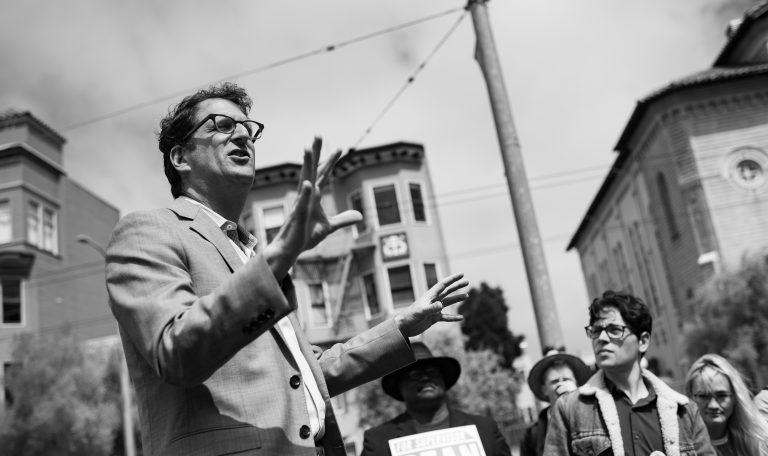
So there are all these billionaires types in the City or at least people connected to them, as well as the glaring issue of the City is homelessness. How can we reconcile that as a city when we have these two opposites that represent our city?
Well, it’s certainly a disgrace that we have so much wealth in the city, and then have so many people who are homeless or marginally housed. And what’s been one of the things that happened early in the pandemic is that congregate shelters that were providing temporary refuge for so many people, who would otherwise be on the streets, were emptied, largely, because of COVID concerns. So we had a big increase early on in the pandemic of homelessness on the street and it was, I think, one of the big challenges in the City for elected officials. I worked closely with a few other supervisors to push hard for shelter-in-place hotels. Early in the pandemic, we in District 5 fundraised to open the first shelter in place hotel in the City. We coordinated with the owner of the Oasis Inn. We moved folks from the two emergency shelters––the family shelter and the women’s shelter––in my district, to safety from a congregate shelter, where they were sleeping on mats on a floor side by side to a place where they had their rooms safer from COVID and survived this.
It’s been a battle between, on the one hand, the Board of Supervisors and homeless advocates, and on the other hand, the mayor and her administration to get them to expand the shelter-in-place hotel program. And so FEMA has been reimbursing previously 75% of the costs, and now just announced that they are going to be reimbursing 100% of the costs. So all the excuses to not house people have vanished. And it’s just unconscionable to not use FEMA money to get people off the streets and into housing. But I think it has exposed a lot about the attitudes toward the homelessness crisis, toward housing, and toward people who are homeless. And I think that you certainly have my office and some other leaders in the City who believe we should be doing absolutely everything we can to get people off the streets and that people have a right to housing. Then you have an administration that is looking constantly for excuses to not house people, to take a harsh approach with respect to the homelessness, and to, in fact, mischaracterize our homelessness crisis as if it’s like a flood of people coming in from all over the country because it’s so great to be homeless in San Francisco. You know that’s kind of a false narrative they’ve created as an excuse to not do more for the unhoused. I think one of the big dividing issues in local politics over this last year is addressing the most critical needs for the most vulnerable people.
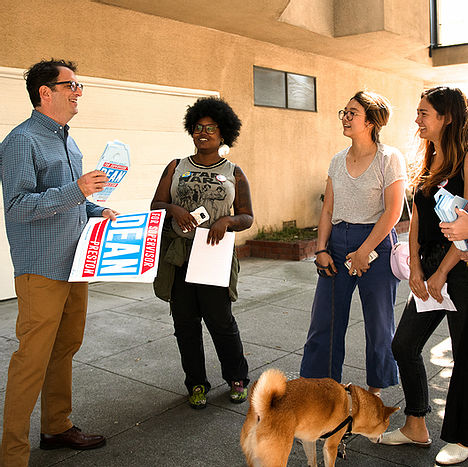
Can you elaborate more on how the state in California has been failing, and even the federal government per se, has been failing residents? I see that local leaders seem to be getting outflanked, or out-ranked in a sense, and all of your hard work sometimes gets pushed out of the way. Something like the new FEMA relief must be a recognition that your hard work means something and it’s for something.
The FEMA decision was really big recently and validated all of what we’ve been saying for the year, which is, not only is it the right thing to do but that we are getting reimbursements. When FEMA announced their 100% reimbursement, they made it retroactive. So all of us were pushing for SIP hotels, like the millions of dollars in the City’s spending on that, it is all going to get reimbursed. It’s now 100% reimbursements going back to the beginning of the pandemic.
It certainly was frustrating before that, because, obviously the Trump administration was mostly useless in addressing people’s needs locally. At the state level, it’s been frustrating that not only have they failed to pass strong eviction protections, but they’ve also kind of tied, or tried to tie, our hands locally by preempting our laws. So there’s certainly a tension between municipal power and state and federal power. Here in San Francisco, we have a Board of Supervisors that has a progressive majority––who may not be perfect on a lot of issues––but are willing to pass things like tenant protections and laws requiring that unhoused people be moved to hotels.
So certainly there has been a lot of leadership at the local level that made a difference on those issues, often in the complete absence of action from the State. One example––and this is not directly on homelessness, but relates––would be evictions. The California Judiciary early on in the pandemic basically said, ‘The courts are going to stop processing eviction cases.’ And that held for a while and was helpful. And then they lifted that ban. They said, ‘Hey, it’s up to the legislature and the governor to do something here.’ The Governor has never issued an eviction moratorium in California. He’s issued press releases saying he’s issuing an eviction moratorium, mischaracterizing the fairly weak laws that he has signed. And those laws at the state level have not protected San Francisco tenants. We’ve passed stronger protections locally, and the state protections have tried to limit the protections we can pass here locally.
But all that said, if you look back over the last year, there has been some eviction activity. We, by and large, through leadership, not just in our office, but activists locally and across the state, have shut down the eviction machine most of this last year in San Francisco. We pushed and worked with the Mayor to do an eviction ban by executive order. And she did. We’ve passed multiple local laws against evictions, both for nonpayment of rent and for other types of evictions. We’ve done that on a temporary basis, and we are expanding one of those to extend it further. So there is a constant back and forth with a state legislature and governor that is there to deliver for landlords, and our City government and folks in our office, that are making sure that folks don’t get evicted, especially during a pandemic.
Can you explain why a social housing policy is better than a market-rate housing policy, especially in a city like San Francisco, and during a pandemic?
Market-rate housing in San Francisco is unaffordable to low-income and working-class people. And yet, it continues to be the focus of most housing production in the City and the region. It’s a failed approach to just keep building market-rate housing and assume that that is going to somehow provide housing for low-income and working-class people. The market does very well for people who are wealthy or have higher incomes. If somebody earns a quarter-million dollars a year or more and wants to move to San Francisco and get a place, they have lots of options. But none of this market-rate housing is affordable to most working-class people. And so you have to create housing in an expensive market like San Francisco that is not part of the speculative market.
They’re all different types of social housing. But the thing is that what the different types of socializing have in common is that they’re not part of the speculative market. They’re not just assets that are for sale and there to be purchased by the highest bidder. And so there are different types of housing that are not on the speculative market. There are community land trusts; there are limited-equity co-ops; there are publicly owned homes, i.e. municipal housing or public housing. There’s nonprofit housing, often financed through tax credit programs that have requirements about affordability under percent affordability. Plus there are other forms of community-controlled housing. Fundamentally, they require that the housing be available below market levels.
That’s the kind of housing that I’ve spent a long time fighting for and will continue to fight for up against a narrative that is well funded by the real estate industry that purposefully conflates affordable housing with market-rate housing. There is this constant drumbeat where people should be ‘pro-housing.’ or ‘against housing’ as if all housing is equally valuable for the community, and it isn’t. The affordable housing that houses your teachers, your janitors, the real working class in the City, is different from the market-rate housing that houses upper-middle-class or upper-class residents in the City. And so that is the tension. But our fight is to make sure we get as much affordable housing as possible. And to also explore not just the traditional ways that we’ve delivered affordable housing, but also things like municipal housing, land trusts, and limited-equity co-ops. All of which are barely funded right now as part of affordable housing strategies.
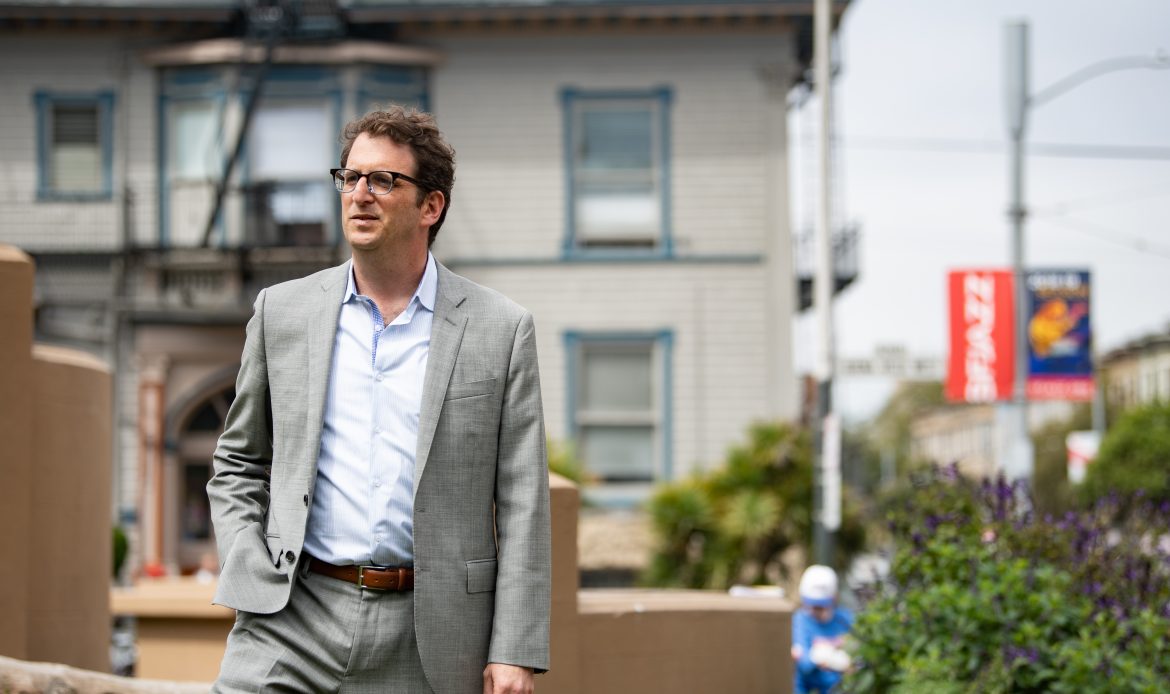
You just mentioned funding. One of the projects that I have seen you are getting underway is a public bank here in San Francisco. Can you explain a little bit about why that is such an exciting endeavor and such a unique tool to try and build some of those projects that you just mentioned?
Yes, I’m very excited about the public bank and working with the public bank coalition, which is an amazing group of activists in San Francisco. We’ve been fighting for years for a public bank, and we’re finally making headway.
There was a state law passed that enabled a local process to create a public bank and that’s what we’re engaged in. So we’ve just introduced legislation at the board of supervisors to create a working group that’s going to create the business plan for a public bank over the next year. We will then take that business plan and then take it to the State and apply for a license for a local public bank.
San Francisco is unusual as a city, in that we have a multi-billion dollar budget. Last year’s budget was $13 billion, a hold a lot of money as a city that doesn’t get spent on day one of a budget cycle. It’s an asset of the City and it’s invested. A lot of these funds are invested into traditional banks, for-profit banks, that are structured to deliver for their shareholders and investors and generate profits. So then the idea of a public bank is that you invest that money in a local bank instead and that the funds you earn off of that money get reinvested into the community to fund things like affordable housing—particular types of affordable housing and things that have no access to federal or state funds. An example would be municipally-owned housing, or community land trusts—any of which can be financed by a public bank. You could also use a public bank for debt relief; for refinancing loans; for medical debt or student debt; or increasingly rent debt all at terms favorable to residents. It’s fundamentally about putting money to work for local residents instead of putting money to work for big banks.
Do you want to highlight any specific projects that you or your office are looking forward to right now?
We have been trying to tackle the issue of rent debt. So rent debt is piling up. We passed Prop I at the ballot, which is a ballot measure to tax property sales over $10 million to provide rent relief. So we will generate millions of dollars for that. But we need way more. So if we had a public bank, for example, it could try to address some of the huge rent debt that’s out there. But the other thing I would want to highlight is that there are different types of housing and community land trusts are a good example. There’s no federal or state funding for a community land trust, and it is one of the best ways to give tenants control over the property and to prevent real estate speculation. We’ve seen it work in San Francisco with something called the Small Sites Acquisition Program. And it’s generally been for smaller buildings, like maybe six-unit type buildings, where there’s a speculator who’s threatening to evict everyone. The land trust program can come in and buy that property. Then tenants basically co-own and pay monthly, but they’re like paying off the cost of the building. But, importantly they’re not trying to generate profit from it. Community land trusts are pretty much an unfunded tool to preserve affordable housing. Like if you have a public bank in San Francisco, there’s so many sites in my district, and other districts, where the property could be created as, or converted to, a community land trust owned by people who live there at affordable rates using capital from a public bank. So that’s just one example where there’s just no federal or state money for it. And we fund a project here and they’re in San Francisco, but we can scale that kind of program up if we had a public bank.
So we are certainly going to have more for that because of Prop I. The same billionaires who were attacking me also attacked Prop I and spent over $5 billion, again where Prop I taxes $10 million more valued property sales. And that’s going to generate hundreds of millions of dollars that can be used for affordable housing and rent relief. But we know that the need is so great that we’re never gonna build to the scale we need to build just through the limited additional taxes that we are allowed to pass in San Francisco. And so that’s the thing about public banking—it unlocks a level of money and revenue that could be put to work for these kinds of projects that are really on a different scale. And it’s such a great investment of all the taxpayer revenue into funds to work for.
So you’ve been around San Francisco for quite a while. Did you have any observations or just views of how the City has changed in a positive direction? What are some positive things you’ve seen over the trajectory of your time here?
I’ve been here for 28 years since I moved here in ’93. I think that every few or even every couple of years in San Francisco, some other pundit from somewhere else is writing about the death of San Francisco. At one level there’s some truth in it. Certainly, the City has lost a lot of its arts and culture, and diversity as it’s become a wealthier city. But I think what is ignored is the very strong working class in the City. It’s been able to hang on and fight against the real estate speculation and find a place and stay here.
I realized something recently that I’ve known this for a long time as I’ve done housing work. I was an eviction defense attorney and tenant rights lawyer for a long time where most of the people I was seeing were in an eviction proceeding already. When I ran for office for the first time, and just knocked on pretty much every door in my district, I met with so many people who don’t make it on the front pages. So many people who are just kind of quietly struggling to stay here. It affirmed for me that, despite all the loss in San Francisco of so many people and so much of what has made the city special, there’s also a very quiet majority of people that are just going about their lives in San Francisco. They share the progressive values of the City. They are protected by things like rent control or from being displaced. They are union members. This is a union town. And it’s encouraging. I don’t want to overstate it because there’s been so much loss in the working class and so much loss in communities of color from the City. But there’s also just a hell of a lot of folks who make the City what it is who are still here and finding a way. Tons of mutual aid communities and a lot of pockets of the city. I was just in Chinatown this morning and it has this incredible community in San Francisco. And again, people have been displaced. I draw quite a bit of hope from the folks who have fought for policies here that have enabled them to stay, and that are part of the fabric of the City and are still here.
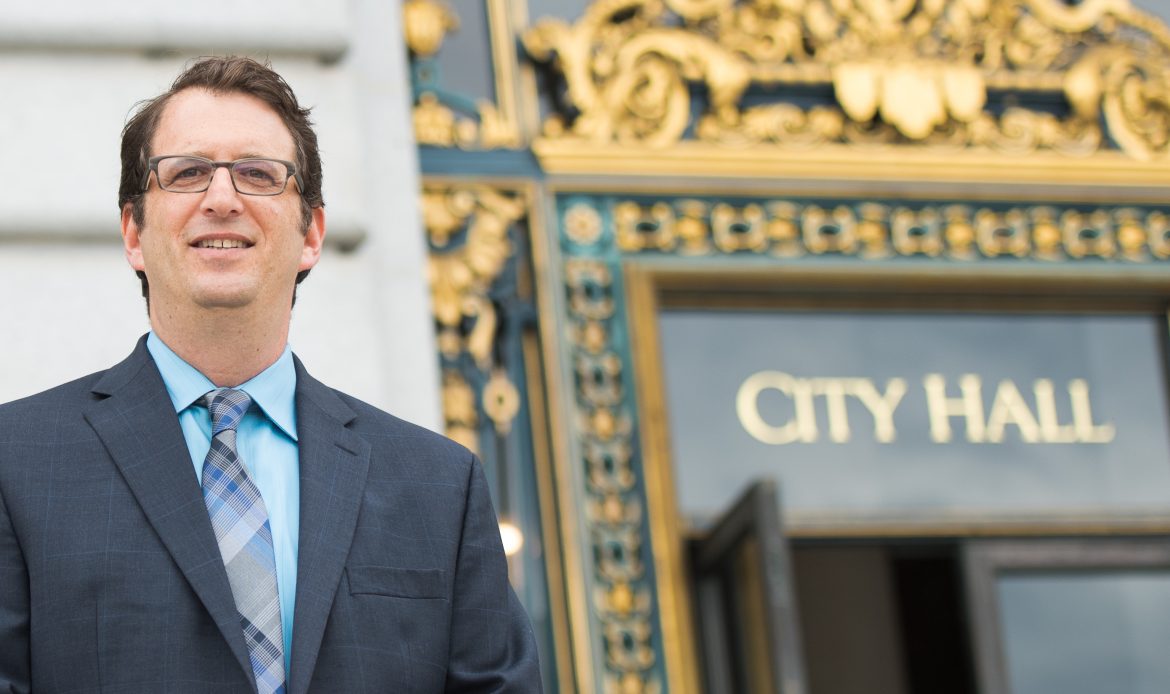
If you had a magic wand, what is something that you would immediately do to stimulate change in San Francisco?
If I had a magic wand it would be making a ‘right to housing’ a reality. Having everyone in this City have decent, stable, secure housing, without living their lives terrified of when they’re going to get evicted or displaced from the City. I think that more than any other thing would completely change the experience of living in the City, and who can live in this city. Just the amount of anxiety and angst that exists in San Francisco, because people are afraid that they’re going to be priced out and kicked out, just creates such a collective toll on the people who are here. So that would be the first thing.
What advice would you give to young people in the City?
I think the best advice is that you shape the City. None of these things are set in stone. In 1979, activists fought for rent control in San Francisco, and ever since then, we’ve had rent control. That’s probably the single biggest reason that the working class is still in San Francisco: because they had the vision to do that. There are choices and decisions made along the way and young activists were at the forefront of leading those changes and deciding what kind of city this is. And so I think there are enormous opportunities to shape the future of the City. I think it’s hard because some of the federal and state decisions can really get in the way, but at the same time, there’s a lot of things we control locally. I’m excited by all the younger activists who I’ve gotten to know and worked with before coming into the office and since I’ve been in office. You know if our younger activists are heavily involved then the future’s bright.
Photos Courtesy: Heidi Alletzhuauser Photography



